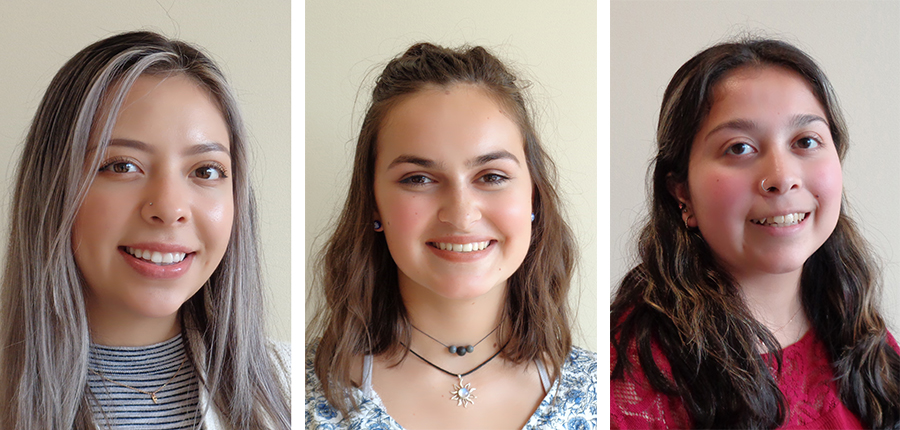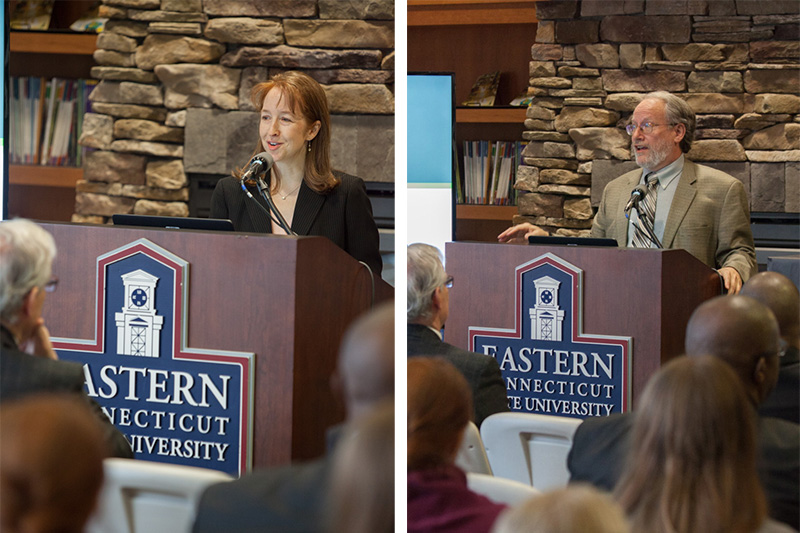- Apply
- Visit
- Request Info
- Give
3 students co-author article on dual language learners
Written by Dwight Bachman
Published on May 18, 2022

Three Eastern Connecticut State University students have co-authored an article with professor emeritus Jeffrey Trawick-Smith and Julia DeLapp, director of the Center for Early Childhood Education, that was recently published online in a peer-reviewed journal. The article “The Influence of Teachers, Peers and Play Materials on Dual Language Learners’ Play Interactions in Preschool” appears in the May 2022 edition of the “Early Childhood Education Journal.”
Trawick-Smith and DeLapp, along with Abigail Bourdon ’22, Kendra Flanagan ’21 and Fatima Godina ’22, make the point that most research on dual language learners (DLLs) in preschool has focused on language and literacy development. Less work has been done on their play and social interactions, in spite of the importance of these for development and learning. Although DLLs possess many social strengths, they also face challenges, particularly in an English-dominant classroom.
The researchers examined the influence of three factors on DLLs’ play interactions with peers in preschool — teacher support, peer interactions and play materials. They recorded the free play of 12 DLLs who were of low English proficiency in English-dominant classrooms and coded aspects of these three factors. Using multiple regression analysis, the researchers identified four variables that predicted the frequency of DLLs’ interactions with their peers: teacher interactions in play that included a child’s home language; frequency of positive interactions with peers during play; verbalizations by peers; and the availability of blocks and replica play toys. The study began in fall 2019.

Godina, a research assistant majoring in Psychology and minoring in Genetic Counseling, discussed the implications of the research: “As a dual language learner myself, it was really interesting to be part of this study and see the results. This experience really influences my future career, and it sparked an interest in the field of research. I love learning, and I think that’s one of the main things that you do as a researcher — you just never stop learning.”
Bourdon, a double major in Early Childhood Education and Psychology, said, “This study is a culmination of years of work. I am lucky to not only have learned throughout the experience, but also grateful to have expanded the field of education. Having the opportunity to participate in research was one of the best parts of Eastern for me and it confirmed my passion to continue to teach and learn about children’s development.”
“Our students always learn so much when they participate in research at our center,” said Trawick-Smith. “Not only do they discover new and important things about children and acquire specific research abilities such as data collection and analysis, but they also learn to think critically, to express their interpretations of findings orally and in writing, and collaborate with others as part of a team. To me, engaging in a research study is a powerful interdisciplinary learning experience for students that addresses nearly every important goal of a liberal arts education.”
DeLapp said in the beginning of the COVID-19 pandemic, schools were closed for several months, necessitating significant adjustments to the study. The students were able to adapt and put together a virtual presentation for the 2020 CREATE Conference using preliminary data.
“Pandemic protocols meant that the students had to learn to collaborate on coding video footage without ever being in the same room together,” said DeLapp. “We had a lot of virtual meetings. In addition, students provided rich written reflections about their observations of children’s interactions, which became quite valuable as we began to analyze results and make sense of the data. I believe the experience of working on this study will serve these students well as they embark on careers where they will use critical thinking skills while being flexible, resilient and collaborative.”
To read the full research article, visit https://doi.org/10.1007/s10643-022-01350-1.


